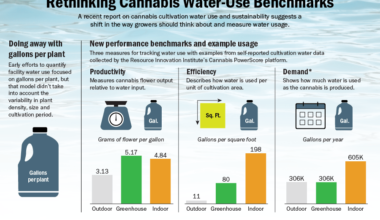
Federal law enforcement agents intercepted a record low 61,000 pounds of marijuana at the southern border in 2023, according to data published on the US Customs and Border Protection website.
The total represents a 29 percent decline from 2022 and a 98 percent decline in seizure activity since 2013, when the agency reported interdicting more than 2.4 million pounds of cannabis.
The data suggests that the growing state-legal marijuana market in the United States, which began in 2014, has dramatically undercut demand for imported Mexican cannabis. Consequently, the production and exportation of Mexican-grown cannabis has also declined significantly.
NORML’s Deputy Director Paul Armentano said, “When it comes to retail cannabis, the prevailing attitude is ‘Buy American.’”
He added, “The rise of the regulated state-legal cannabis market has not only supplanted Americans’ demand for Mexican cannabis, but in many places it has also disrupted the unregulated domestic marketplace.”
According to a 2023 survey, 52 percent of US consumers residing in legal states said that they primarily sourced their cannabis products from brick-and-mortar establishments. By contrast, only 6 percent of respondents said that they primarily purchased cannabis from a “dealer.”
Data from Canada shows a similar trend away from the unregulated market. In 2019, the first full year of legalization, only 37 percent of respondents reporting buying cannabis from legal sources. That percentage increased to 69 percent in 2022. Only four percent of respondents in 2022 reported purchasing cannabis from the unregulated marketplace.
Marijuana seizure statistics are available online from the US Customs and Border Protection website.
Related
Medical Disclaimer:
The information provided in these blog posts is intended for general informational and educational purposes only. It is not a substitute for professional medical advice, diagnosis, or treatment. Always seek the advice of your physician or other qualified healthcare provider with any questions you may have regarding a medical condition. The use of any information provided in these blog posts is solely at your own risk. The authors and the website do not recommend or endorse any specific products, treatments, or procedures mentioned. Reliance on any information in these blog posts is solely at your own discretion.




